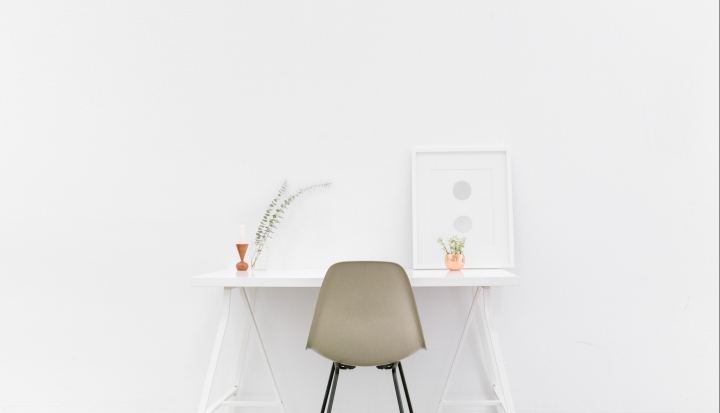Minimalism is a trendy word I thought I could avoid for a long time. I am a life-long believer in clutter. As in “no, this room is lived-in, not messy,” kind of lover of clutter.
As a child, I always had a messy room. I was fortunate enough to have a walk-in closet between the ages of 4 and 18, but “walk-in” was a generous word to describe the situation that closet often (always) found itself in.
I had a lot of stuff and I subscribed to the mantra “a messy desk is a sign of a genius.” Essentially I was my mother’s nightmare.
When I went to college, not much changed—at first. I lived with a girl who had more stuff than I did and our freshman dorm room looked like a TGI Friday’s, with every inch of the wall covered in posters and pictures, an inflatable cat hanging from the ceiling, and clothes and books crammed into every crevice we could find.
I basically kept this habit up until I moved out of my first apartment. Realizing how much I hated packing, I elected to just get rid of the stuff I no longer used and clothing I didn’t wear. And I was amazed at how many things I could easily let go of that I had thought I could never do without.
When I moved back into my parents’ house after graduation, I furthered my quest for minimalism, without even realizing I was really doing it. I bought Marie Kondo’s book, The Art of Tidying Up, and went to town.
For those of you unfamiliar with the magic that is Marie Kondo, let me break it down for you: Marie Kondo is a professional organizer from Japan. Essentially, she takes clients who are struggling with being tidy and helps them cleanse their homes of useless junk. Because she was so successful in this venture, she blessed us with a book that details the process she goes through with her clients. Each chapter is broken down into a category of things, and she describes how to decide what to keep and what get rid of.
Kondo suggests not straying from her method, and with good reason. Her process of getting rid of material items and focusing on what is really wanted and needed was like a meditation. Taking each item, one-by-one, and assessing its value made me realize how much stuff I owned I didn’t even need.
As I inspected each possession and asked myself “does this spark joy?”—an idea created by Kondo for evaluating the importance of the material items in our life—I realized that most of my stuff didn’t really “spark joy.” I had countless papers I had never recycled, bunches of clothes that didn’t fit or that I never wore, and plenty of bottles of nail polish I had collected from my friend’s that would never find use.
By the end of the purge, I was left with a huge garbage bag of clothes to donate and three full bags of straight-up trash.
I was alarmed, but proud.
My life post-minimalism-purge is great. I only own clothes I will actually wear, so it takes less time to get ready in the morning. Everything around me feels cultivated, because it all means something special.
I am no longer spending huge amounts of time trying to find places for things I don’t even use, or living in a space that is messy and claustrophobic just because I simply can’t find places for all my things.
Minimalism is almost its own spirituality. It’s a spirituality of understanding that less is more, of knowing what you need and, sometimes more importantly, what it is you really want. It helps to point out the more important things in life, like family and friends, which can sometimes be left behind in our quest to acquire new things. Minimalism keeps the focus on the non-tangible things in life. With less stuff to deal with, we simply have more time to do what we really want to, and isn’t that what really matters?
In Kondo’s book, she states that none of her clients (those she helps tidy and organize their homes) have ever relapsed and become messy again.
Well, four months after I completed my minimalism journey, I haven’t either—a feat anyone who has ever known me prior would be shocked by.











